 Nearly two years ago, France lost its triple A credit-rating and the news has only got worse. Unemployment has risen and economic growth in France has remained low and this is one of the reasons why France’s credit rating has been downgraded further from AA+ to AA. A high credit rating doesn’t guarantee market confidence, but it does help to keep the cost of borrowing for the government low. Thus, this downgrading could spell trouble for French borrowing costs.
Nearly two years ago, France lost its triple A credit-rating and the news has only got worse. Unemployment has risen and economic growth in France has remained low and this is one of the reasons why France’s credit rating has been downgraded further from AA+ to AA. A high credit rating doesn’t guarantee market confidence, but it does help to keep the cost of borrowing for the government low. Thus, this downgrading could spell trouble for French borrowing costs.
Standard and Poor’s (S&P), who downgraded the French credit rating, is expecting government debt to rise to 86% of gross domestic product and believes that unemployment will remain above 10% until 2016. While the French government has put various reforms in place to boost the struggling economy, S&P don’t believe they are sufficient and have been very public in criticising the government’s effort. They were quoted as saying:
We believe the French government’s reforms to taxation, as well as to product, services and labour markets, will not substantially raise France’s medium-term growth prospects and that on-going high unemployment is weakening support for further significant fiscal and structural policy measures.
Following the downgrading, the return for those investors purchasing French debt did begin to rise, echoing the theory that the cost of borrowing would rise.  The yield on French government 10-year bonds increased from 2.158% to 2.389%. The outlook given to France by S&P was ‘stable’, implying that there is a relatively low chance that S&P would change France’s credit-rating again in the next two years.
The yield on French government 10-year bonds increased from 2.158% to 2.389%. The outlook given to France by S&P was ‘stable’, implying that there is a relatively low chance that S&P would change France’s credit-rating again in the next two years.
Many were surprised at the downgrading of France’s credit rating, but this may be the nudge that President Hollande needs to push through extensive labour market reforms with the aim of reducing unemployment and generating growth in the economy. Despite this latest move by S&P, the other credit rating agencies have yet to take similar action. Perhaps they are more convinced by the Finance Minister, Pierre Moscovici who claims that France’s debt is ‘one of the safest and most liquid in the world.’ He commented that:
 They are underestimating France’s ability to reform, to pull itself up … During the last 18 months the government has implemented major reforms aimed at improving the French economic situation, restoring its public finances and its competitiveness.
They are underestimating France’s ability to reform, to pull itself up … During the last 18 months the government has implemented major reforms aimed at improving the French economic situation, restoring its public finances and its competitiveness.
It will take some time for the full impact of this development in France’s economy to become apparent. The cost of borrowing has already risen only time will tell what will happen to market confidence over the coming weeks. However, what is certain is that pressure is already mounting on Francois Hollande. The following articles consider the French economy.
France told to reform labour market after second credit rating downgrade The Guardian, Phillip Inman (8/13/13)
France’s credit rating cut by S&P to AA BBC News (8/11/13)
S&P lowers France rating on reform doubts, markets unfazed Reuters, Nicholas Vinocur (8/11/13)
Hollande approval rating slumps as France downgraded The Telegraph, James Titcomb (8/11/13)
S&P cuts France’s credit rating by one notch to double-A Wall Street Journal, William Horobin (8/11/13)
Five charts that show the state of the French economy The Telegraph (8/11/13)
France rating downgrade heaps pressure on Francois Hollande Financial Times, Michael Stothard (8/11/13)
Questions
- What does a double A rating mean for the French economy?
- Which factors will be considered when a ratings agency decides to change a country’s credit rating?
- France’s unemployment rate is one of the key factors that S&P has considered. Why is France’s unemployment rate so high? Which type(s) of unemployment are increasing?
- Use a diagram to illustrate the unemployment that France is facing.
- If a country does see its credit rating downgraded, what might this mean for government borrowing costs? Explain why this might cause further problems for a country?
- Markets have been ‘unfazed’ by the downgrade. How do you think markets will react to over the coming weeks? Explain your answer.
- What action could the French government take to ensure that S&P is the only ratings agency that downgrades their credit rating?
 UK house prices are incredibly volatile. This helps to explain the fascination that many of us have with the British housing market. According to the latest ONS house Price Index, the average UK house price in August 2013 was 3.8 per cent higher than 12 months earlier. The rates varied across the home nations: 4.1 per cent in England, 1.1 per cent in Northern Ireland, 1 per cent in Wales and -0.7 per cent in Scotland. Here we take a look at international house price inflation rates. Is the British housing market as unique as we think it is?
UK house prices are incredibly volatile. This helps to explain the fascination that many of us have with the British housing market. According to the latest ONS house Price Index, the average UK house price in August 2013 was 3.8 per cent higher than 12 months earlier. The rates varied across the home nations: 4.1 per cent in England, 1.1 per cent in Northern Ireland, 1 per cent in Wales and -0.7 per cent in Scotland. Here we take a look at international house price inflation rates. Is the British housing market as unique as we think it is?
Let’s begin at home (excuse the pun). If we take the period from 1970 Q1 to 2013 Q2, the average annual rate of house price inflation across the UK is 9.7 per cent. The average rate in England is 9.8 per cent, as it is in Wales too, while in Scotland it is 9.0 per cent and in Northern Ireland it is 8.8 per cent. While the long-term averages of the UK nations are rather more similar than perhaps we might expect, what is quite interesting is the differences that emerge in more recent times. If we take the period from July 2008 to August 2013, the average annual rate of house price inflation in the UK is -0.2 per cent, in England it is 0.1 per cent, in both Wales and Scotland it is -1.0 per cent, while in Northern Ireland it is -11 per cent.
The recent English average is heavily distorted by London and to a lesser extent the rest of the South East. In London and the South East the average annual house price inflation rates since July 2008 have been 2.6 per cent and 0.2 per cent respectively. In all the other English regions the average rate has been negative. In my own region of the East Midlands the average rate has been -1.2 per cent – this is exactly the UK average if both London and the South East are removed from the figures.
 Now let’s go international. Chart 1 shows annual house price inflation rates for the UK and six other countries since 1997. Interestingly, it shows that house price volatility is a common feature of housing markets. It is not a uniquely British thing. It also shows that the USA is notable for its relatively robust house price inflation rates of late. In the first half of 2013 annual house price inflation has been running at 7 per cent in America, compared with 2 to 3 per cent here in the UK. In contrast, the Netherlands has seen near-double digit rates of house price deflation over the past year, albeit with a rebound in the third quarter of this year. (Click here to download a PowerPoint of the chart.)
Now let’s go international. Chart 1 shows annual house price inflation rates for the UK and six other countries since 1997. Interestingly, it shows that house price volatility is a common feature of housing markets. It is not a uniquely British thing. It also shows that the USA is notable for its relatively robust house price inflation rates of late. In the first half of 2013 annual house price inflation has been running at 7 per cent in America, compared with 2 to 3 per cent here in the UK. In contrast, the Netherlands has seen near-double digit rates of house price deflation over the past year, albeit with a rebound in the third quarter of this year. (Click here to download a PowerPoint of the chart.)
The chart captures very nicely the effect of the financial crisis and subsequent economic downturn on global house prices. Ireland saw annual rates of house price deflation touch 23 per cent in 2009 compared with rates of deflation of 12 per cent in the UK. Denmark too suffered significant house price deflation with prices falling at an annual rate of 15 per cent in 2009.
House price volatility appears to be an inherent characteristic of housing markets worldwide. Let’s now consider the extent to which house prices rise over the longer term. In doing so, we consider real house price growth after having stripped out the effect of consumer price inflation. Real house price growth measures the growth of house prices relative to consumer prices.
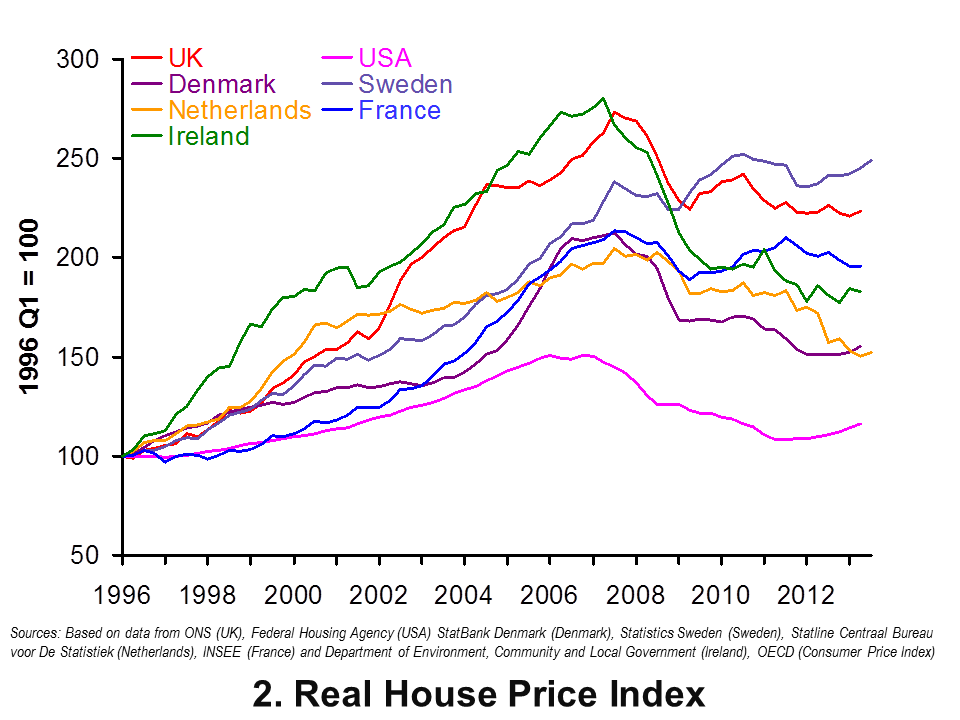 Chart 2 shows real house prices since 1996 Q1. (Click here to download a PowerPoint of the chart.) It shows that up to 2013 Q2, real house prices in the UK have risen by a factor of 2.24, i.e. they are two and a quarter times higher. This is a little less than in Sweden where prices are 2.5 times higher.
Chart 2 shows real house prices since 1996 Q1. (Click here to download a PowerPoint of the chart.) It shows that up to 2013 Q2, real house prices in the UK have risen by a factor of 2.24, i.e. they are two and a quarter times higher. This is a little less than in Sweden where prices are 2.5 times higher.
Chart 2 shows that the increase in real house prices in the UK and Sweden is significantly higher than in the other countries in the sample. In particular, in the USA real house prices in 2013 Q2 are only 1.16 times higher than in 1996 Q1. In the US actual house prices, when viewed over the past 17 years or so, have grown only a little more quickly than consumer prices.
The latest data on house prices suggest that house price volatility is not unique to the UK. However the rate of growth over the longer term relative to consumer prices is markedly quicker than in many other countries. It is this which helps to explain the amount of attention paid to the UK housing market – and not least by policy-makers.
Data
House Price Indices: Data Tables Office for National Statistics
Articles
First time buyers in race to beat house price rises Telegraph, Nicole Blackmore (8/11/13)
House prices soar by £13,000: Values rise at fastest rate for 3 years Express, Sarah O’Grady (7/11/13)
House prices: ‘south-east set to outpace London’ for first time in a decade Guardian, Jennifer Rankin (6/11/13)
UK house prices hit record level, says ONS BBC News, (15/10/13)
UK house prices rise at fastest pace in three years in October – Nationwide Reuter (31/11/13)
 Jonathan Portes: UK house prices a ‘force of evil’ BBC News, (5/11/13)
Jonathan Portes: UK house prices a ‘force of evil’ BBC News, (5/11/13)
Questions
- What is meant by the annual rate of house price inflation? What about the annual rate of house price deflation?
- What factors are likely to affect housing demand?
- What factors are likely to affect housing supply?
- Explain the difference between nominal and real house prices. What does a real increase in house prices mean?
- How might we explain the recent differences between house price inflation rates in London and the South East relative to the rest of the UK?
- What might explain the very different long-term growth rates in real house prices in the USA and the UK?
- Why were house prices so affected by the financial crisis?
- What factors help explain the volatility in house prices?
 The latest preliminary GDP estimates for 2013 Q3 suggest that the economy’s output (real GDP) expanded by 0.8 per cent following on the back of a 0.7 per cent increase in Q2. Growth was observed across the main industrial sectors with the important service sector growing by 0.7 per cent. While the output of the service sector is now 0.5 per cent higher than its 2008 Q1 peak, the total output of the economy remains 2.6 per cent below its 2008 Q1 peak.
The latest preliminary GDP estimates for 2013 Q3 suggest that the economy’s output (real GDP) expanded by 0.8 per cent following on the back of a 0.7 per cent increase in Q2. Growth was observed across the main industrial sectors with the important service sector growing by 0.7 per cent. While the output of the service sector is now 0.5 per cent higher than its 2008 Q1 peak, the total output of the economy remains 2.6 per cent below its 2008 Q1 peak.
The volatility of growth underpins the idea of business cycles and on occasions results in recessions. Today’s release needs to be set in the context of this volatility and in the context of 2008/9 recession which saw output fall by 7.2 per cent. UK output peaked in 2008 Q1 (£392.786 billion at 2010 prices). There then followed 6 quarters during which output declined.
Output declined again in 2010 Q4 (–0.2% growth) and again in 2011 Q4 (–0.1% growth). The estimates of real GDP for 2011 Q4 and 2012 Q1 are identical at £376.462 billion (at 2010 prices). Previous revisions have seen the 2012 Q1 growth number revised up so that a further recession resulting in a double-dip recession no longer appears in the figures.
While output is now portrayed as (very) flat in 2012 Q1, it did fall again in 2012 Q2 (–0.5 per cent growth) and in 2012 Q4 (–0.3 per cent growth). Moving forward in time, the latest ONS numbers show an economy that grew by 0.4 per cent in 2013 Q1 (to £377.301 billion at 2010 prices), by 0.7 per cent in 2013 Q2 (to £379.780 billion at 2010 prices) and by 0.8 per cent in 2013 Q3 billion (to £382.818 billion at 2010 prices). Compared with 2012 Q3, the output of the UK economy in 2013 Q2 is 1.5 per cent higher.
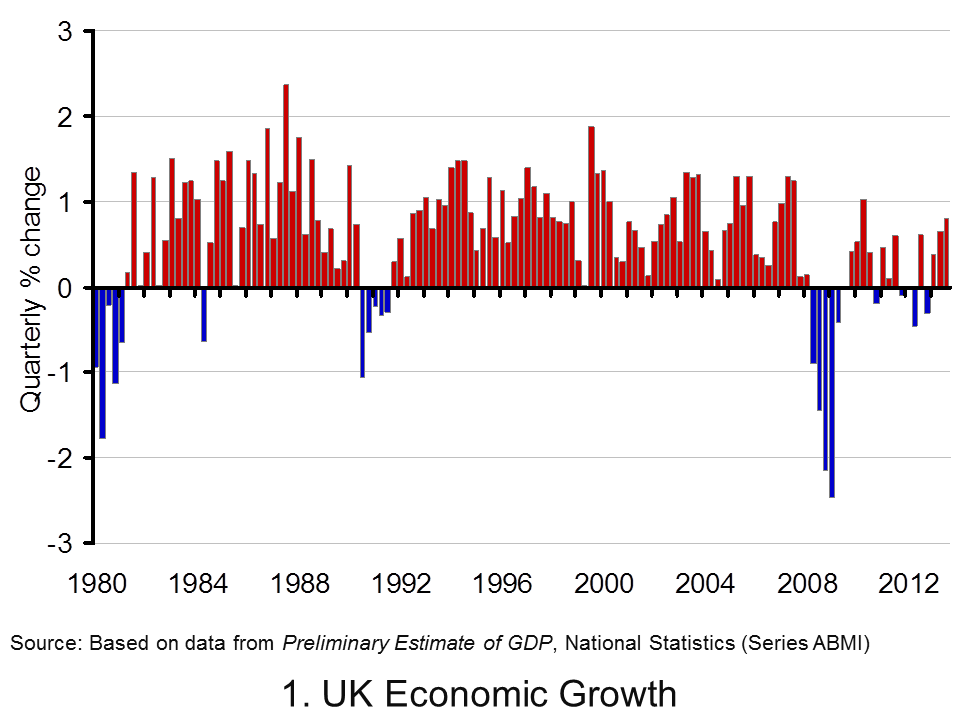 Chart 1 helps to put the recent growth numbers into an historical context. It shows the quarterly change in real GDP since the 1980s. From it, we can see the 5-quarter recession that commenced in 1980 Q1 when output shrunk by 4.6 per cent, the 5-quarter recession that commenced in 1990 Q3 when output shrank by 2.4 per cent and the 6-quarter recession that commenced in 2008 Q2 when output shrank by 7.2 per cent. (Click here to download a PowerPoint of the chart.)
Chart 1 helps to put the recent growth numbers into an historical context. It shows the quarterly change in real GDP since the 1980s. From it, we can see the 5-quarter recession that commenced in 1980 Q1 when output shrunk by 4.6 per cent, the 5-quarter recession that commenced in 1990 Q3 when output shrank by 2.4 per cent and the 6-quarter recession that commenced in 2008 Q2 when output shrank by 7.2 per cent. (Click here to download a PowerPoint of the chart.)
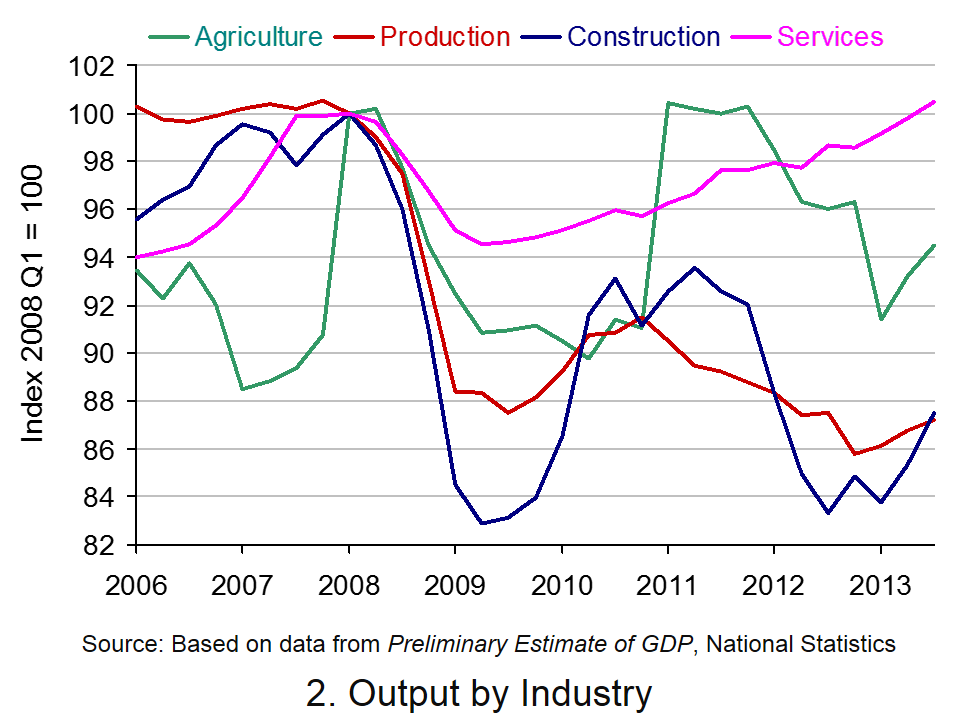 Chart 2 scratches a little below the surface by looking at output by the four principal industrial types. The interesting finding is that the output of the service sector has now risen above its 2008 Q1 peak. In 2013 Q3 output is 0.5 per cent larger. By contrast, the other three sectors remain smaller than in 2008 Q1. Agriculture, forestry and fisheries is 5.9 per cent smaller, construction 14.3 per cent smaller and production (including manufacturing) is 14.6 per cent smaller. (Click here to download a PowerPoint of the chart.)
Chart 2 scratches a little below the surface by looking at output by the four principal industrial types. The interesting finding is that the output of the service sector has now risen above its 2008 Q1 peak. In 2013 Q3 output is 0.5 per cent larger. By contrast, the other three sectors remain smaller than in 2008 Q1. Agriculture, forestry and fisheries is 5.9 per cent smaller, construction 14.3 per cent smaller and production (including manufacturing) is 14.6 per cent smaller. (Click here to download a PowerPoint of the chart.)
With today’s release, quarterly growth now averages –0.11 per cent since 2008 Q2. If we take the series back to the mid 1950s when it began, the average quarterly rate of growth is 0.64 per cent which is equivalent to an annual rate of increase of 2.57 per cent. While today’s news is encouraging it remains important to keep it in perspective and to ensure that growth is sustainable and built on firm foundations.
Data
Preliminary Estimate of GDP – Time Series Dataset Q3 2013 Office for National StatisticsGross Domestic Product Preliminary Estimate, Q3 2013 Office for National Statistics
New Articles
UK economy grows by 0.8% – the fastest pace in three years Guardian, Larry Elliott (25/10/13)
UK economy grew by 0.8% in third quarter Independent, Nick Renaud-Komiya (25/10/13)
UK GDP: fastest growth for three years BBC News (25/10/13)
UK economy grows by 0.8pc in third quarter Telegraph, Szu Ping Chu (25/10/13)
UK Economy: GDP Growth Accelerates To 0.8% Sky News (25/10/13)
Previous Articles
GDP grows 0.7% as UK economy shows steady recovery Guardian, Phillip Inman (26/9/13)
Hopes of economic recovery take double blow as GDP remains at 0.7% Independent, Russell Lynch (26/9/13)
UK economic growth confirmed at 0.7% BBC News (26/9/13)
IMF cuts global growth outlook but raises UK forecast BBC News (9/10/13)
Good news as IMF upgrades UK’s growth forecast Independent, Ben Chu (8/10/13)
Economy: IMF Makes UK Growth Forecast U-Turn Sky News (8/10/13)
Questions
- What is the difference between nominal and real GDP? Which of these helps to track changes in economic output?
- Looking at Chart 1 above, summarise the key patterns in real GDP since the 1980s.
- What is a recession? What is a double-dip recession?
- What are some of the problems with the traditional definition of a recession?
- Explain the arguments for and against the proposition that the UK has recently experienced a double-dip recession.
- Can a recession occur if nominal GDP is actually rising? Explain your answer.
- What factors might result in economic growth being so variable?
- What factors might explain the very different patterns seen since the late 2000s in the volume of output of the 4 main industrial sectors?
- Produce a short briefing paper exploring the prospects for economic growth in the UK over the next 12 to 18 months.
 One very important characteristic of economic growth is its short-term volatility. The volatility of growth underpins the idea of business cycles and on occasions results in recessions. The traditional definition is where real GDP (output) declines for 2 or more consecutive quarters. Interestingly, the latest GDP numbers contained in the Quarterly National Accounts mean that the recession previously evidenced from 2011 Q4 to 2012 Q2 has effectively disappeared. Nonetheless, output today is still 3.3 per cent lower than before the 2008 economic downturn.
One very important characteristic of economic growth is its short-term volatility. The volatility of growth underpins the idea of business cycles and on occasions results in recessions. The traditional definition is where real GDP (output) declines for 2 or more consecutive quarters. Interestingly, the latest GDP numbers contained in the Quarterly National Accounts mean that the recession previously evidenced from 2011 Q4 to 2012 Q2 has effectively disappeared. Nonetheless, output today is still 3.3 per cent lower than before the 2008 economic downturn.
The ONS’s latest output numbers raise some interesting questions around our understanding of what constitutes a recession. Should, for instance, we define it solely in terms of real GDP and, even if we do, is a strict statistical definition based around two consecutive quarterly falls appropriate? The recent estimates from the ONS show that the 2008/9 recession saw output fall by 7.2 per cent. They show that UK output peaked in 2008Q1 (£392.786 billion at 2010 prices). There then followed 6 quarters during which output declined.
Output declined again in 2010 Q4 (-0.2% growth) and again in 2011 Q4 (-0.1% growth). The new estimates of real GDP for 2011 Q4 and 2012 Q1 are now identical at £376,462 billion (at 2010 prices). Previous revisions have also seen the 2012 Q1 growth number revised up and, hence, a further recession resulting in a double-dip recession has effectively now been statistically removed. The 2013 Q1 Quarterly National Accounts revised growth up so that 2012 Q1 only saw a percentage fall when measured to the third decimal place (–0.007% growth).
While output is now portrayed as (very) flat in 2012 Q1, it did fall again in 2012 Q2 (-0.5 per cent growth) and in 2012 Q4 (-0.3 per cent growth). Moving forward in time, the latest ONS numbers show that the economy grew by 0.4 per cent in 2013 Q1 (to £377,301 billion at 2010 prices) and by 0.7 per cent in 2013 Q2 (to £379,780 billion at 2010 prices). Despite this, output remains 3.3 per cent below its 2008 Q1 peak. A more positive spin on the numbers would be to point out that output is up 4.2 per cent from its 2009 Q3 trough (£364,557 billion at 2010 prices).
Perhaps the debate around the appearance and disappearance of recessions in official data strengthen the argument for a more holistic and considered view of what constitutes a recession. In the USA the wonderfully-named Business Cycle Dating Committee takes a less fixed view of economic activity and, hence, of recessions. Its website argues:
It (the Committee) examines and compares the behavior of various measures of broad activity: real GDP measured on the product and income sides, economy-wide employment, and real income. The Committee also may consider indicators that do not cover the entire economy, such as real sales and the Federal Reserve’s index of industrial production (IP).
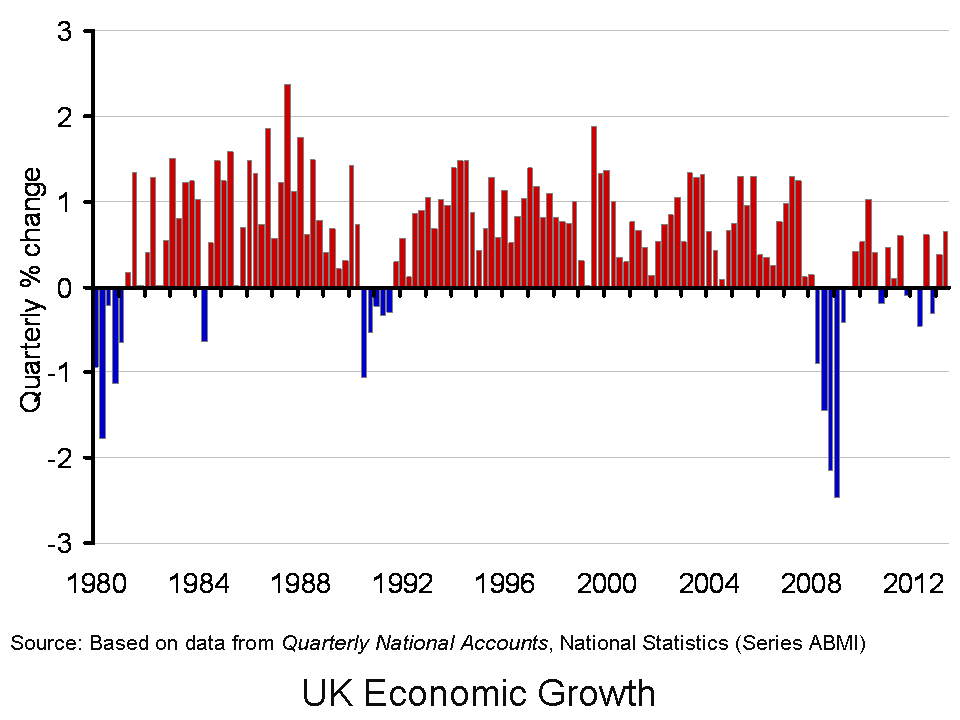 Of course, the advantage of focusing on real GDP alone in measuring activity and in determining recessions is that it is usually very straightforward to interpret. Regardless of whether the UK did or did not experience a recession at the end of 2011 and into 2012, the chart helps to put the recent growth numbers into an historical context. It shows the quarterly change in real GDP since the 1980s.
Of course, the advantage of focusing on real GDP alone in measuring activity and in determining recessions is that it is usually very straightforward to interpret. Regardless of whether the UK did or did not experience a recession at the end of 2011 and into 2012, the chart helps to put the recent growth numbers into an historical context. It shows the quarterly change in real GDP since the 1980s.
From the chart, we can see the 5-quarter recession that commenced in 1980 Q1 when output shrunk by 4.6 per cent, the 5-quarter recession that commenced in 1990 Q3 when output shrank by 2.4 per cent and the 6-quarter recession that commenced in 2008 Q2 when output shrank by 7.2 per cent. (Click here to download a PowerPoint version of the chart.)
The chart allows to see the other characteristic of growth too: over the long run growth is positive. Since 1980, the average rate of growth per quarter has been 0.57 per cent. This is equivalent to an average rate of growth of 2.3 per cent per year.
Since 2008 Q2, quarterly growth has averaged -0.16 per cent which is equivalent to an annual rate of growth of -0.63 per cent! In any language these are extraordinary numbers and certainly help to put the recent rebound in growth into context.
Data
Quarterly National Accounts Time Series Dataset Q2 2013 Office for National StatisticsStatistical Bulletin: Quarterly National Accounts Q2 2013 Office for National Statistics
New Articles
GDP grows 0.7% as UK economy shows steady recovery Guardian, Phillip Inman (26/9/13)
Hopes of economic recovery take double blow as GDP remains at 0.7% Independent, Russell Lynch (26/9/13)
UK economic growth confirmed at 0.7% BBC News (26/9/13)
IMF cuts global growth outlook but raises UK forecast BBC News (9/10/13)
Good news as IMF upgrades UK’s growth forecast Independent, Ben Chu (8/10/13)
Economy: IMF Makes UK Growth Forecast U-Turn Sky News (8/10/13)
Previous Articles
UK avoided double-dip recession in 2011, revised official data shows Guardian, Phillip Inman (27/6/13)
Britain’s double dip recession revised away, but picture still grim Reuters, David Milliken and William Schomberg (27/6/13)
UK double-dip recession revised away BBC News (27/6/13)
IMF raises UK economic growth forecast BBC News (9/7/13)
IMF raises UK economic growth forecast to 0.9% but cuts prediction for global growth Independent, Holly Williams (9/7/13)
IMF Upgrades UK Growth Forecast For 2013 Sky News (9/7/13)
Questions
- What is the difference between nominal and real GDP? Which of these helps to track changes in economic output?
- Looking at the chart above, summarise the key patterns in real GDP since the 1980s.
- What is a recession? What is a double-dip recession?
- What are some of the problems with the traditional definition of a recession?
- Explain the arguments for and against the proposition that the UK has recently experienced a double-dip recession.
- Can a recession occur if nominal GDP is actually rising? Explain your answer.
- What factors might result in economic growth being so variable?
- Produce a short briefing paper exploring the prospects for economic growth in the UK over the next 12 to 18 months.
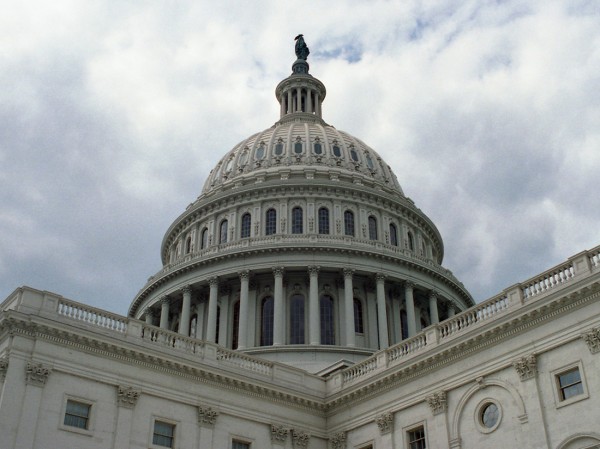 You may have been following the posts on the US debt ceiling and budget crisis: Over the cliff and Over the cliff: an update. Well, after considerable brinkmanship over the past couple of weeks, and with the government in partial shutdown since 1 October thanks to no budget being passed, a deal was finally agreed by both Houses of Congress, less than 12 hours before the deadline of 17 October. This is the date when the USA would have bumped up against the debt ceiling of $16.699 trillion and would be in default – unable to borrow sufficient funds to pay its bills, including maturing debt.
You may have been following the posts on the US debt ceiling and budget crisis: Over the cliff and Over the cliff: an update. Well, after considerable brinkmanship over the past couple of weeks, and with the government in partial shutdown since 1 October thanks to no budget being passed, a deal was finally agreed by both Houses of Congress, less than 12 hours before the deadline of 17 October. This is the date when the USA would have bumped up against the debt ceiling of $16.699 trillion and would be in default – unable to borrow sufficient funds to pay its bills, including maturing debt.
But the deal only delays the problem of a deeply divided Congress, with the Republican majority on the House of Representatives only willing to make a long-term agreement in exchange for concessions by President Obama and the Democrats on the healthcare reform legislation. All that has been agreed is to suspend the debt ceiling until 7 February 2014 and fund government until 15 January 2014.
A more permanent solution is clearly needed: not just one that raises the debt ceiling before the next deadline, but one which avoids such problems in the future. Such concerns were echoed by Christine Lagarde, Managing Director of the International Monetary Fund (IMF), who issued the following statement:
The U.S. Congress has taken an important and necessary step by ending the partial shutdown of the federal government and lifting the debt ceiling, which enables the government to continue its operations without disruption for the next few months while budget negotiations continue to unfold.
It will be essential to reduce uncertainty surrounding the conduct of fiscal policy by raising the debt limit in a more durable manner. We also continue to encourage the U.S. to approve a budget for 2014 and replace the sequester with gradually phased-in measures that would not harm the recovery, and to adopt a balanced and comprehensive medium-term fiscal plan.
US default: Congress votes to end shutdown crisis The Telegraph, Raf Sanchez (17/10/13)
US shutdown: Christine Lagarde calls for stability after debt crisis is averted The Guardian,
James Meikle, Paul Lewis and Dan Roberts (17/10/13)
America’s economy: Meh ceiling? The Economist (15/10/13)
Relief as US approves debt deal BBC News (17/10/13)
Shares in Europe dip after US debt deal BBC News (17/10/13)
Dollar slides as relief at U.S. debt deal fades Reuters, Richard Hubbard (17/10/13)
US debt deal: Analysts relieved rather than celebrating Financial Times, John Aglionby and Josh Noble (17/10/13)
Greenspan fears US government set for more debt stalemate BBC News (21/10/13)
Questions
- Explain what is meant by default and how the concept applies to the USA if it had not suspended or raised its budget ceiling.
- Is the agreement of October 16 likely to ‘reassure markets’? Explain your reasoning.
- What is likely to happen to long-term interest rates as a result of the agreement?
- Will the imposition of a new debt ceiling by February 2014 remove the possibility of using fiscal policy to stimulate aggregate demand and speed up the recovery?
- What is meant by ‘buy the rumour, sell the news’ in the context of stock markets? How was this relevant to the agreement on the US debt ceiling and budget?
 Nearly two years ago, France lost its triple A credit-rating and the news has only got worse. Unemployment has risen and economic growth in France has remained low and this is one of the reasons why France’s credit rating has been downgraded further from AA+ to AA. A high credit rating doesn’t guarantee market confidence, but it does help to keep the cost of borrowing for the government low. Thus, this downgrading could spell trouble for French borrowing costs.
Nearly two years ago, France lost its triple A credit-rating and the news has only got worse. Unemployment has risen and economic growth in France has remained low and this is one of the reasons why France’s credit rating has been downgraded further from AA+ to AA. A high credit rating doesn’t guarantee market confidence, but it does help to keep the cost of borrowing for the government low. Thus, this downgrading could spell trouble for French borrowing costs. The yield on French government 10-year bonds increased from 2.158% to 2.389%. The outlook given to France by S&P was ‘stable’, implying that there is a relatively low chance that S&P would change France’s credit-rating again in the next two years.
The yield on French government 10-year bonds increased from 2.158% to 2.389%. The outlook given to France by S&P was ‘stable’, implying that there is a relatively low chance that S&P would change France’s credit-rating again in the next two years.They are underestimating France’s ability to reform, to pull itself up … During the last 18 months the government has implemented major reforms aimed at improving the French economic situation, restoring its public finances and its competitiveness.








